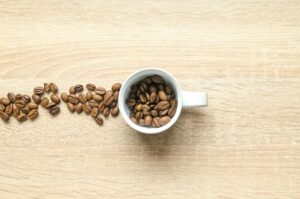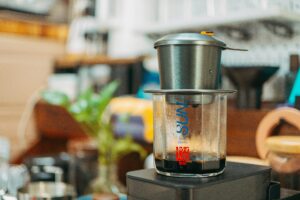There’s much debate among coffee enthusiasts about the best way to brew coffee. One question that often comes up is whether you can use espresso beans for drip coffee. If you’ve found yourself wondering about this, you’re not alone. The world of coffee can be complex, but with a little guidance, you can understand how to get the best out of your beans, no matter their type. This post will explore whether espresso beans can be used for drip coffee, the potential benefits and drawbacks, and some practical tips for making the perfect cup.
What Are Espresso Beans?
Origin and Roasting Process
Espresso beans are typically roasted longer and darker than beans intended for other brewing methods. This extended roasting process gives them a richer flavor and reduces acidity, making them ideal for the concentrated brewing method that espresso machines use.
Flavor Profile
Espresso beans often have a fuller, more robust flavor profile. They pack a punch, delivering intense and bold flavors. This is a result of both the roasting process and the types of beans chosen, which are usually Arabica or a blend with Robusta to enhance crema and strength.
Intended Use
These beans are specifically designed to produce the small, concentrated shots of coffee known as espresso. The fine grind required for espresso machines facilitates quick extraction, ensuring the intense flavor and characteristic crema.
Understanding Drip Coffee
The Basics of Drip Coffee
Drip coffee makers work by slowly pouring hot water over a bed of coffee grounds. The water then drips through the grounds and filter into a carafe. This method allows for a gentler extraction process, typically resulting in a milder flavor profile compared to espresso.
Ideal Beans for Drip Coffee
Beans used for drip coffee are generally roasted to a medium level, balancing flavor, acidity, and sweetness. The grind size is also crucial; drip coffee requires a medium grind to ensure proper extraction.
Flavor Expectations
Drip coffee is known for its balanced flavor profile. It’s less intense than espresso, with a smoother, more mellow taste. This makes it a popular choice for those who enjoy sipping coffee throughout the day.
Can You Use Espresso Beans in a Drip Coffee Maker?
Compatibility of Espresso Beans
Yes, you can use espresso beans in a drip coffee maker. While espresso beans are typically roasted darker, they can still be enjoyed when brewed using different methods, including drip coffee. However, the resulting flavor profile will differ from traditional drip coffee made with beans roasted explicitly for that purpose.
Grind Size Considerations
One of the most significant factors to consider is the grind size. Espresso requires a fine grind, but for drip coffee, you’ll need a medium grind. If you use a fine grind with a drip coffee maker, the water will pass through too slowly, potentially over-extracting and resulting in a bitter taste. Therefore, make sure to adjust your grinder to a medium setting to get the best results.
Flavor Differences
When you brew espresso beans using a drip coffee maker, you’ll likely notice a stronger, more intense flavor compared to regular drip coffee. The dark roast can introduce deeper, nuttier, and sometimes smokier notes. Some coffee drinkers find this appealing, while others might prefer the lighter, more nuanced flavors of traditional drip coffee beans.
Benefits of Using Espresso Beans for Drip Coffee
Enhanced Flavor Profile
One of the main benefits of using espresso beans is the rich, bold flavor they provide. If you enjoy a more intense coffee, these beans can offer a unique twist on your usual drip coffee.
Versatility
Using espresso beans in a drip coffee maker can add versatility to your coffee-drinking experience. You can experiment with different beans and brewing methods to discover new flavors and preferences.
Accessibility
If you already have espresso beans at home, using them for drip coffee is a convenient option. This can save time and money, as you won’t need to purchase separate beans for each brewing method.
Drawbacks of Using Espresso Beans for Drip Coffee
Potential for Bitterness
If not ground correctly, espresso beans can produce a bitter coffee when brewed in a drip coffee maker. To avoid this, ensure you use a medium grind rather than the fine grind typically used for espresso.
Limited Flavor Complexity
While espresso beans provide a robust flavor, they might lack the complexity and subtlety of beans roasted specifically for drip coffee. If you enjoy the delicate flavors of lighter roasts, you might find espresso beans too overpowering.
Adjustment Period
Switching to espresso beans for drip coffee may require some experimentation and adjustment. You might need to try different grind sizes and brewing times to find the perfect balance for your taste.
Steps to Brew Drip Coffee with Espresso Beans
Step 1: Choose Your Beans
Select high-quality espresso beans. Look for fresh beans with a roast date within the last few weeks for the best flavor.
Step 2: Adjust Your Grinder
Set your grinder to a medium setting. This is crucial for proper extraction and avoiding bitterness.
Step 3: Measure Your Coffee
Use the standard ratio of 1 to 2 tablespoons of coffee per 6 ounces of water. Adjust according to your taste preferences.
Step 4: Brew
Place the ground coffee in the filter of your drip coffee maker. Add water and start the brewing process.
Step 5: Taste and Adjust
Taste your coffee and adjust the grind size or coffee-to-water ratio as needed. This might take a few tries to perfect, but the results will be worth it.
Expert Tips for Brewing Drip Coffee with Espresso Beans
Freshness is Key
Always use fresh beans. Stale coffee can lead to a flat, uninspiring brew.
Water Quality Matters
Use filtered water to avoid any off-flavors that tap water might introduce. Good water quality is essential for great coffee.
Experiment and Enjoy
Don’t be afraid to experiment with different beans, grind sizes, and brewing times. The perfect cup is a personal preference, and part of the fun is discovering what works best for you.
Common Questions About Using Espresso Beans for Drip Coffee
Will the Coffee Be Too Strong?
Using espresso beans can result in a stronger flavor, but adjusting the grind size and coffee-to-water ratio can help balance this.
Is There a Specific Type of Espresso Bean That Works Best?
Arabica beans are generally preferred for their smoother flavor, but a blend with Robusta can add an interesting depth and crema-like texture.
Can I Use Pre-Ground Espresso Coffee?
Pre-ground espresso coffee is typically too fine for drip coffee makers and can result in over-extraction and bitterness. Grinding your own beans to a medium consistency is recommended.
Conclusion
In conclusion, you can absolutely use espresso beans to make drip coffee, but there are some important considerations to keep in mind. By understanding the differences in roasting and grind size, you can experiment to find the perfect balance that suits your taste. Whether you’re looking to enhance your morning routine or simply make use of the beans you have on hand, using espresso beans for drip coffee offers a unique and versatile coffee-drinking experience.
For more tips and insights into making the perfect cup of coffee, be sure to explore our other resources or get in touch with our coffee experts. Enjoy your brewing adventure!






